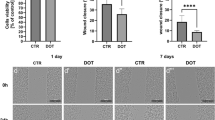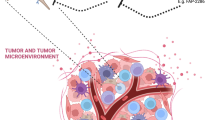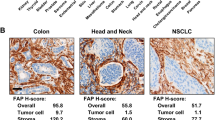Abstract
Angiogenesis is a key factor for post-ischemic repair of the infarcted myocardium. This study aims to monitor angiogenesis of infarcted myocardium with a positron emission tomography (PET) imaging agent, 18F-alfatide II (18F-AlF-NOTA-E[PEG4-c(RGDfk)]2), targeting αvβ3 integrin after treatment with vascular endothelial growth factor (VEGF) gene and/or bone marrow mesenchymal stem cells (BMSCs). Sprague–Dawley (SD) rats underwent left coronary artery ligation and were randomly divided into four groups: normal saline control, Ad-VEGF, BMSCs, and Ad-VEGF + BMSCs (n = 4/group). The induced myocardial infarction (MI) was confirmed by electrocardiogram (ECG) with ST-segment elevation, and 99mTc-MIBI SPECT imaging showing defected myocardial perfusion. Alfatide II PET was performed to monitor angiogenesis at different time points after the therapy. The ratios of Alfatide II tracer uptake in the infarcted myocardium to normal myocardium in all four groups were analyzed. The PET results were validated by ex vivo tissue biodistribution, autoradiography, and immunofluorescence staining. At 1 week after therapy, elevated RGD peptide tracer uptake at the infarcted myocardium was observed in all four groups. The infarct to normal heart ratio of Alfatide II tracer for the three treatment groups was significantly higher than that of the control group (3.94 ± 0.20 for VEGF group, 3.77 ± 0.16 for BMSCs group and 4.86 ± 0.08 for the combination group vs. 3.01 ± 0.03 for the control group, P < 0.005, P < 0.005, P < 0.0001, respectively). The combination treatment group demonstrated higher contrast than the two single treatment groups. Similar results were also observed at 4 weeks after treatment. Autoradiography showed similar trend to that of PET results. Immunohistochemical staining showed expression of VEGF protein and the presence of adenovirus in the myocardium. The patterns of vascular density and integrin αvβ3 expression were measured by CD31 and CD61 immunostaining analysis, and were consistent with the PET results. 18F-alfatide II PET could reflect angiogenesis of infarcted myocardium after VEGF gene and BMSCs therapy and further provide a non-invasive way of monitoring therapy response of myocardial infarction.





Similar content being viewed by others
References
Brooks PC, Montgomery AM, Rosenfeld M, Reisfeld RA, Hu T, Klier G, Cheresh DA (1994) Integrin αvβ3 antagonists promote tumor regression by inducing apoptosis of angiogenic blood vessels. Cell 79(7):1157–1164
Gao H, Lang L, Guo N, Cao F, Quan Q, Hu S, Kiesewetter DO, Niu G, Chen X (2012) PET imaging of angiogenesis after myocardial infarction/reperfusion using a one-step labeled integrin-targeted tracer 18F-AlF-NOTA-PRGD2. Eur J Nucl Med Mol Imagin 39(4):683–692
Guo J, Lang L, Hu S, Guo N, Zhu L, Sun Z, Ma Y, Kiesewetter DO, Niu G, Xie Q, Chen X (2014) Comparison of three dimeric 18F-AlF-NOTA-RGD tracers. Mol Imagin Biol 16(2):274–283
Hagikura K, Fukuda N, Yokoyama S, Yuxin L, Kusumi Y, Matsumoto T, Ikeda Y, Kunimoto S, Takayama T, Jumabay M, Mitsumata M, Saito S, Hirayama A, Mugishima H (2010) Low invasive angiogenic therapy for myocardial infarction by retrograde transplantation of mononuclear cells expressing the VEGF gene. Int J Cardiol 142(1):56–64
Halkos ME, Zhao ZQ, Kerendi F, Wang NP, Jiang R, Schmarkey LS, Martin BJ, Quyyumi AA, Few WL, Kin H, Guyton RA, Vinten-Johansen J (2008) Intravenous infusion of mesenchymal stem cells enhances regional perfusion and improves ventricular function in a porcine model of myocardial infarction. Basic Res Cardiol 103(6):525–536
Hedman M, Muona K, Hedman A, Kivelä A, Syvänne M, Eränen J, Rantala A, Stjernvall J, Nieminen MS, Hartikainen J, Ylä-Herttuala S (2009) Eight-year safety follow-up of coronary artery disease patients after local intracoronary VEGF gene transfer. Gene Ther 16(5):629–634
Higuchi T, Bengel FM, Seidl S, Watzlowik P, Kessler H, Hegenloh R, Reder S, Nekolla SG, Wester HJ, Schwaiger M (2008) Assessment of αvβ3 integrin expression after myocardial infarction by positron emission tomography. Cardiovasc Res 78(2):395–403
Hu S, Cao W, Lan X, He Y, Lang J, Li C, Hu J, An R, Gao Z, Zhang Y (2011) Comparison of rNIS and hNIS as reporter genes for noninvasive imaging of bone mesenchymal stem cells transplanted into infarcted rat myocardium. Mol Imagin 10(4):227–237
Huang NF, Okogbaa J, Babakhanyan A, Cooke JP (2012) Bioluminescence imaging of stem cell-based therapeutics for vascular regeneration. Theranostics 2(4):346–354
Isner JM (1998) Vascular endothelial growth factor: gene therapy and therapeutic angiogenesis. Am J Cardiol 82(10A):63S–64S
Jacobson O, Zhu L, Ma Y, Weiss ID, Sun X, Niu G, Kiesewetter DO, Chen X (2011) Rapid and simple one-step F-18 labeling of peptides. Bioconjug Chem 22(3):422–428
Laitinen I, Notni J, Pohle K, Rudelius M, Farrell E, Nekolla SG, Henriksen G, Neubauer S, Kessler H, Wester HJ, Schwaiger M (2013) Comparison of cyclic RGD peptides for αvβ3 integrin detection in a rat model of myocardial infarction. EJNMMI Res 3(1):38
Luo Y, Sun Y, Zhu Z, Li F (2014) Is the change of integrin αvβ3 expression in the infarcted myocardium related to the clinical outcome? Clin Nucl Med 39(7):655–657
Makowski MR, Ebersberger U, Nekolla S, Schwaiger M (2008) In vivo molecular imaging of angiogenesis, targeting αvβ3 integrin expression, in a patient after acute myocardial infarction. Eur Heart J 29(18):2201
McBride WJ, Sharkey RM, Karacay H, D’Souza CA, Rossi EA, Laverman P, Chang CH, Boerman OC, Goldenberg DM (2009) A novel method of 18F radiolabeling for PET. J Nucl Med 50(6):991–998
McBride WJ, D’Souza CA, Sharkey RM, Karacay H, Rossi EA, Chang CH, Goldenberg DM (2010) Improved 18F labeling of peptides with a fluoride-aluminum-chelate complex. Bioconjug Chem 21(7):1331–1340
Meoli DF, Sadeghi MM, Krassilnikova S, Bourke BN, Giordano FJ, Dione DP, Su H, Edwards DS, Liu S, Harris TD, Madri JA, Zaret BL, Sinusas AJ (2004) Noninvasive imaging of myocardial angiogenesis following experimental myocardial infarction. J Clin Invest 113(12):1684–1691
Moon HH, Joo MK, Mok H, Lee M, Hwang KC, Kim SW, Jeong JH, Choi D, Kim SH (2014) MSC-based VEGF gene therapy in rat myocardial infarction model using facial amphipathic bile acid-conjugated polyethyleneimine. Biomaterials 35(5):1744–1754
Niu G, Chen X (2011) Why integrin as a primary target for imaging and therapy. Theranostics 1:30–47
Nordlie MA, Wold LE, Simkhovich BZ, Sesti C, Kloner RA (2006) Molecular aspects of ischemic heart disease: ischemia/reperfusion-induced genetic changes and potential applications of gene and RNA interference therapy. J Cardiovasc Pharmacol Ther 11(1):17–30
Pons J, Huang Y, Arakawa-Hoyt J, Washko D, Takagawa J, Ye J, Grossman W, Su H (2008) VEGF improves survival of mesenchymal stem cells in infarcted hearts. Biochem Biophys Res Commun 376(2):419–422
Segers VF, Lee RT (2008) Stem-cell therapy for cardiac disease. Nature 451(7181):937–942
Sherif HM, Saraste A, Nekolla SG, Weidl E, Reder S, Tapfer A, Rudelius M, Higuchi T, Botnar RM, Wester HJ, Schwaiger M (2012) Molecular imaging of early αvβ3 integrin expression predicts long-term left-ventricle remodeling after myocardial infarction in rats. J Nucl Med 53(2):318–323
van der Laan AM, Piek JJ, van Royen N (2009) Targeting angiogenesis to restore the microcirculation after reperfused MI. Nat Rev Cardiol 6(8):515–523
Yeh TS, Fang YH, Lu CH, Chiu SC, Yeh CL, Yen TC, Parfyonova Y, Hu YC (2014) Baculovirus-transduced, VEGF-expressing adipose-derived stem cell sheet for the treatment of myocardium infarction. Biomaterials 35(1):174–184
Ylä-Herttuala S, Rissanen TT, Vajanto I, Hartikainen J (2007) Vascular endothelial growth factors: biology and current status of clinical applications in cardiovascular medicine. J Am Coll Cardiol 49(10):1015–1026
Acknowledgments
This project was supported by the program of the National Natural Science Foundation of China (NSFC) (Grant No.81101068, 81471707), and by the program of scientific research foundation for the returned overseas Chinese scholars, state education ministry (Grant No. [2014] 1685).
Author information
Authors and Affiliations
Corresponding author
Ethics declarations
Conflict of interest
The authors declare no competing financial interest.
Statement on the welfare of animals
All procedures performed in studies involving animals were in accordance with the ethical standards of the institution or practice at which the studies were conducted.
Additional information
M. Cai and L. Ren contributed equally.
Rights and permissions
About this article
Cite this article
Cai, M., Ren, L., Yin, X. et al. PET monitoring angiogenesis of infarcted myocardium after treatment with vascular endothelial growth factor and bone marrow mesenchymal stem cells. Amino Acids 48, 811–820 (2016). https://doi.org/10.1007/s00726-015-2129-4
Received:
Accepted:
Published:
Issue Date:
DOI: https://doi.org/10.1007/s00726-015-2129-4




